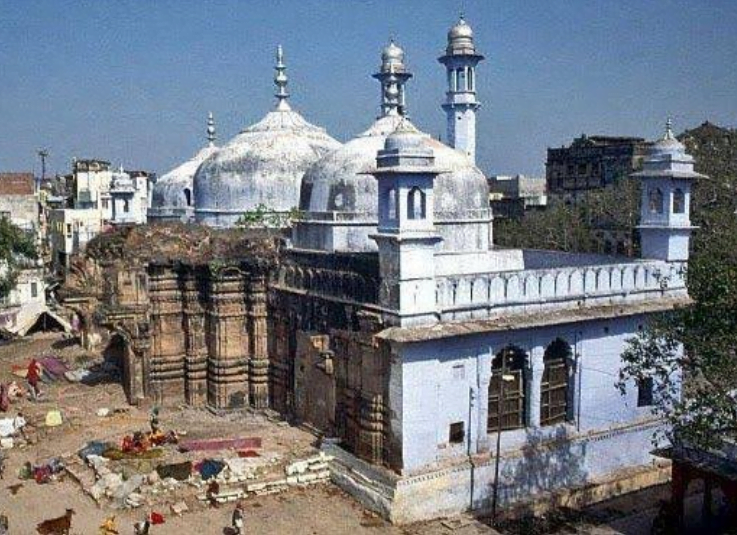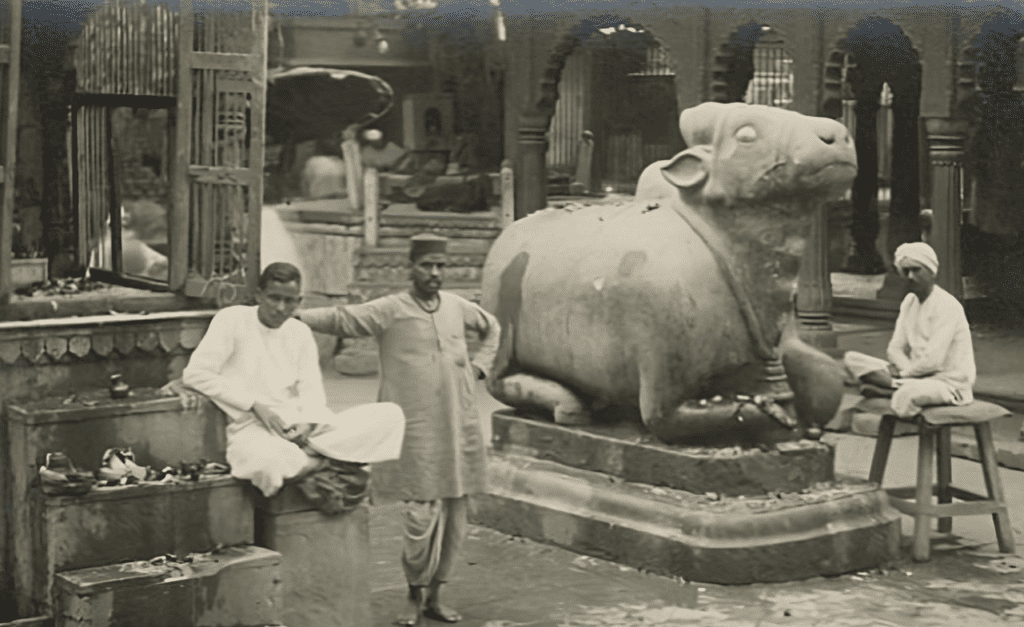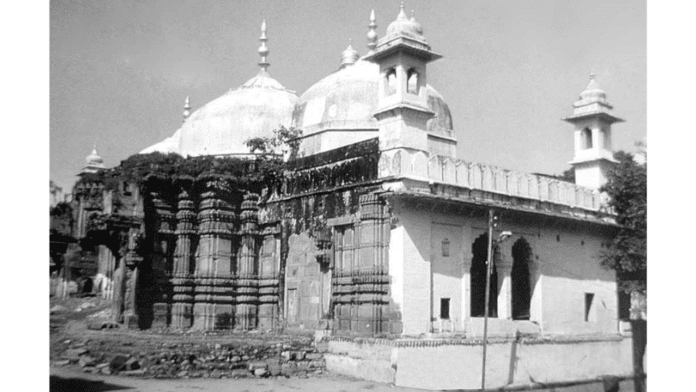The lawyer stated, “Before the construction of the current structure(Gyanvapi Mosque), there was a large Hindu temple present there.”
In Short
Claims on Gyanvapi Mosque
Representing the Hindu side in the Ayodhya mosque-Kashi Vishwanath temple case, lawyer Vishnu Shankar Jain claimed on Thursday that the Archaeological Survey of India (ASI) has found remains of a large Hindu temple inside the Varanasi Gyanvapi mosque.

Referring to the 839-page ASI survey report, he asserted that the Gyanvapi mosque, located adjacent to the Kashi Vishwanath temple, was built over the remains of a grand Hindu temple destroyed by Mughal emperor Aurangzeb in the 17th century. He claimed that during the survey ordered by the court, remnants of Hindu deities were found in two cellars.
ASI Report confirms that a temple existed at the site before Gyanvapi Mosque built over it.
— Mr Sinha (@MrSinha_) January 25, 2024
Prabhu Shri Ram got his home, now it's time for his Aradhya Mahadev….
Har Har Mahadev 🙏🙏🙏pic.twitter.com/hQRri5db60
ASI Statement
According to ASI, the construction materials used in the expansion and renovation of the Gyanvapi mosque were scientifically examined, and some portions of existing temples, including pillars and plaster, were reused with minor modifications. After the stone material borne on the corners was removed, the pillars and plaster in the galleries were carefully examined and it was discovered that they were originally a component of pre-existing constructions that were modified by rearranging the floral patterns and distorting the sculptures.
The present western wall of the mosque is claimed to be part of an earlier Hindu temple. Jain stated, “ASI has stated that before the construction of the existing structure, there was a large Hindu temple. This is the decisive conclusion of ASI.”

Statues of Hindu deities found
Jain claimed that ASI mentioned that statues of Hindu deities and intricate architectural elements were discovered. He said, “Existing architectural remnants, sculptures on the walls, a grand entrance gate, a smaller entrance with a distorted image, and carvings of birds and animals for interior and exterior ornamentation indicate that the western wall is a remnant of a Hindu temple.
The Arabic-Persian inscriptions found inside a room mention that the mosque was constructed during Aurangzeb’s 20th reign. Therefore, it appears that the pre-existing structure was destroyed in the 17th century, as evident from the scientific study of the survey. The analysis of architectural vestiges suggests the presence of a Hindu temple before the construction of the present structure.”
Inscriptions in Indian scripts found
The lawyer mentioned that during the survey, inscriptions in Devanagari, Granth, Telugu, and Kannada scripts were discovered on 32 inscriptions. “ASI has stated that during the survey, several inscriptions were found on the existing and pre-existing structures.

A total of 34 inscriptions were recorded during the current survey, and 32 epigraphic pages were documented. These inscriptions are actually engraved on stone, remnants of an existing Hindu temple that was reused during the construction of the present structure. The older constructions and their components were destroyed, and the current structure was rebuilt using the remains, according to an analysis of the earlier inscriptions on the architectural relics.
The names of gods like Janardan, Rudra, and Umeshwar are written on these inscriptions, the speaker said.
Jain claimed, “These pieces of evidence indicate that when Aurangzeb destroyed the Adi Vishweshwar temple in the 17th century, there was already a grand temple present at that location.”
After a district court order on July 21 last year, the ASI conducted a survey of the mosque to determine whether its construction was done on the remains of a pre-existing Hindu temple. Last week, District Judge A.K. Vishwakarma ruled that the ASI survey report on the Gyanvapi mosque premises would be handed over to both Hindu and Muslim parties.
PHOTOS AND POSTS SOURCE : X



